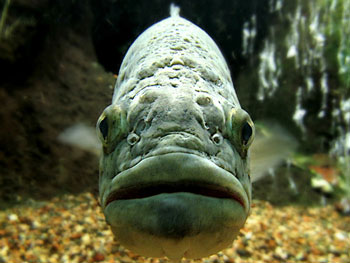Why Fish from a Kayak?
September 12, 2012Fish Recipes: Simple Whitefish Meuniere for Two
September 26, 2012In small numbers, jellyfish are relatively harmless. They’re interesting as an encounter, especially in the wild where their unique methods of navigating the ocean are fascinating to behold, but whereas one jelly is a curiosity, a thousand jellyfish can become a menace. That’s why it’s so disturbing to read that an increase in jellyfish numbers across the globe has been interfering with fishing. Jelly populations are growing in numerous coastal ecosystems – especially where overfishing has removed the predators that normally would have kept these otherwise innocuous creatures in check.
Spend enough time at the beach, and you’re bound to be stung by a jelly eventually. But other than the temporary pain, the long-term effects of brushing up against a jellyfish are minimal. That changes when the rapidly growing numbers of these creatures start to have an impact on tourism, industry, and as mentioned above, fishing. Until this year, there was only anecdotal evidence to go on when it came to increasing jelly populations, but a recent study has proven that something fishy is going on with this humble invertebrate.
Jellies are, of course, part of the ecosystem like any other sea creature, but the recent blooms – another word for population explosions – have some people worried. Human activities, like the aforementioned overfishing, are being blamed, as are pollution, climate change, and other factors directly related to people’s impact on the environment. No matter what is causing the blooms, however, the idea that the growing number of jellies could negatively impact fishing has us worried. You may want to worry, too, based on these facts:
- Jellies can clog fishing nets and cause them to burst, leading to the loss of the day’s catch plus expensive repairs.
- A mass of jellyfish in the area can impact the quality of a day’s catch, reducing the commercial value of otherwise in-demand fish.
- Jellyfish now outnumber finfish off the coast of Namibia, making it difficult for local anglers to catch the usual numbers of sardines and anchovies.
- In 2007, a jelly invasion destroyed Northern Ireland’s only salmon farm, killing more than 100,000 fish and costing more than $1.5m.
- Huge Nomura jellyfish blooms are causing big problems for anglers in Japan, where their massive size and weight – think 3-6 ft. long and over 300 pounds – is damaging fishing equipment.
- In some parts of the world, jellyfish blooms have caused work stoppages among professional anglers.
- Jellies have caused millions of dollars of losses in the fishing world, particularly in the Black Sea ($350m), the Sea of Japan ($20m), and around Australia ($10m).
While the United States hasn’t seen the same level of damages as other areas of the world, there have been record blooms along the coasts and in rivers. Growing jelly populations may not be a cause for alarm in our neck of the woods just yet, but it’s certainly something to watch out for in coming years.

